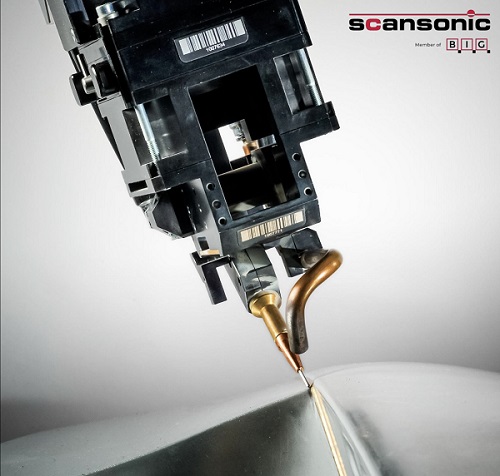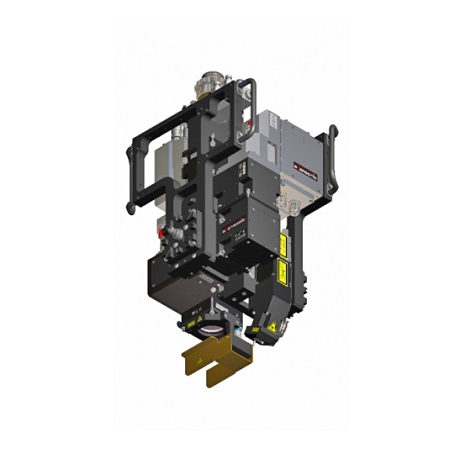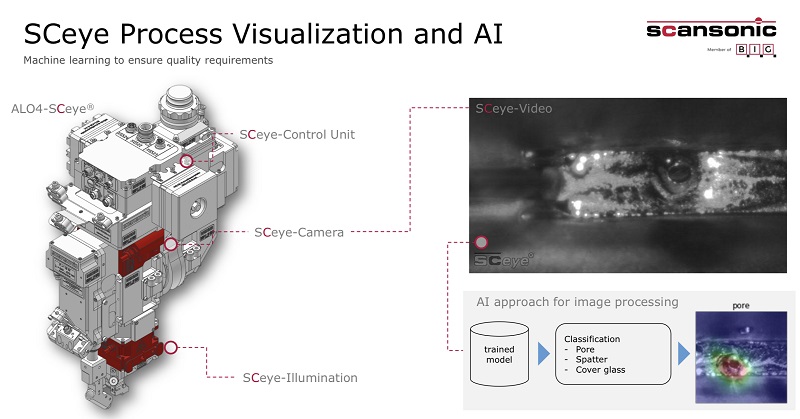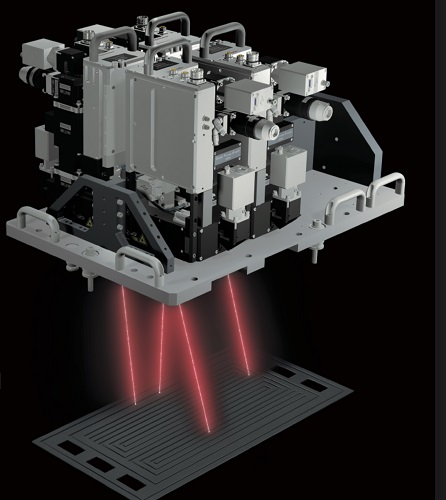Laser Welding on EV Battery and Automation
In today’s growing trend of electric vehicles, demand for Battery Tray Welding solutions is increasing. With this, industries are seeking new methods which are more efficient. Generally, for Battery Tray Welding applications, strength is necessary for resisting various impacts and at the same time, weight of the vehicle must be as less as possible. Aluminum Al5XXX/Al 6XXX series is suitable for this application because it is light material and also has high strength.
However welding Aluminum has its own problems like hot cracking, porosity and gaps, specifically for larger parts like battery trays, etc. But, using advanced joining methods, this can be mitigated.
1. Laser Welding: An advanced method:
Laser beam is focused on seam profile, which melts the edges and then after solidifying, the edged are fused. There are 2 methods for Laser Welding:
1. Tactile Welding
This method uses a filler wire which also acts as tactile sensor.
- The wire is constantly under control and in touch with the seam, which acts as a sensor and senses the seam profile.
- Welding is done accordingly.
- The filler wire can also be used to bridge the gaps.
- By the optional oscillation feature, even larger gaps can be bridged.
For Al 6XXX, using filler wire is the only option, for avoiding hot cracks.


The following fixture shows ALO4, The optics which scansonic has developed for Tactile welding.


2. Remote Welding:
- In this method, there is no filler wire, it is mainly suitable for lower strength Aluminum grades like Al 5XXX.
- The small beam spot providing high power density is controlled using fast moving mirror mechanism.
- Seam tracking is done using optical triangulation method, which even detects vertical gaps.
- For vertical gap bridging, the adaptive beam oscillates accordingly along the upper and lower edges.
- Material from upper edge is melted and the molten weld pool is directed towards lower edge to bridge the gap.
- One of the greatest advantages of this method is that it can be done very fast and at higher working distance.
3. SCeye : Process Monitoring:


Currently, the ways in which industries are operating are evolving drastically. Industries are seeking for new methods to have more control over their processes to achieve more accuracy, minimize errors, reduce lead time, and make the processes more efficient.
The advanced SCeye module is a process monitoring system. As the name says, it monitors the welding process, records different process and machine parameters like laser power, robot speed, wire feed rate, pressure, Z position, etc. Up to 16 such process parameters can be recorded and analyzed.
Advantages of SCeye:
- Oil residues, pores, and other such defects can be easily detected by visual inspection.
- Combined with an AI algorithm and trained program, it may even eliminate the need for a separate inspection station.
- As all the process parameters and even visuals for each part are recorded, if there are any defects in a particular part, it is possible to check the process parameters for that particular part and detection of the root cause for defect becomes easier.
The additional AI feature:
Scansonic has recently found a way to harness Artificial Intelligence in process monitoring.
The new Artificial Intelligence, when integrated with the SCeye system, analyzes the raw data collected by the SCeye system with the help of deep learning. Once the system is trained for detecting specific errors (as defined by the user), it automatically detects the defects and even eliminates the need for visual inspection. Now a days, even 98 % pore detection is possible.
4. Parallelization of processes by using compact scanner units (CSC):
Fast component welding (FCW) is the recent contribution by Scansonic to accelerate production processes e.g. for high welding speed demands on long weld seams, where physical limits stop further increase of laser power or laser beam brilliance.
The very compact scanner unit allows assembly of a number of CSC units with lowest foot print on an individual applications rack. Instead of running one remote unit along the component, multiple CSC units working parallel on individual segments of the part. This reduces the cycle time by the amount of units utilized, for instance 50% less cycle time with 2 CSC units versus 1 remote scanner head.
Besides state-of-the-art scan fields, further provisions are for instance three different camera ports at different positions in the beam path, which enable easy teaching processes and can be used for process control and image recognition. By new creative approaches many more laser applications are now possible respecting todays efficiency demands in serial production e.g. for welding of battery cooling plates, fuel cells or even hair pins.


